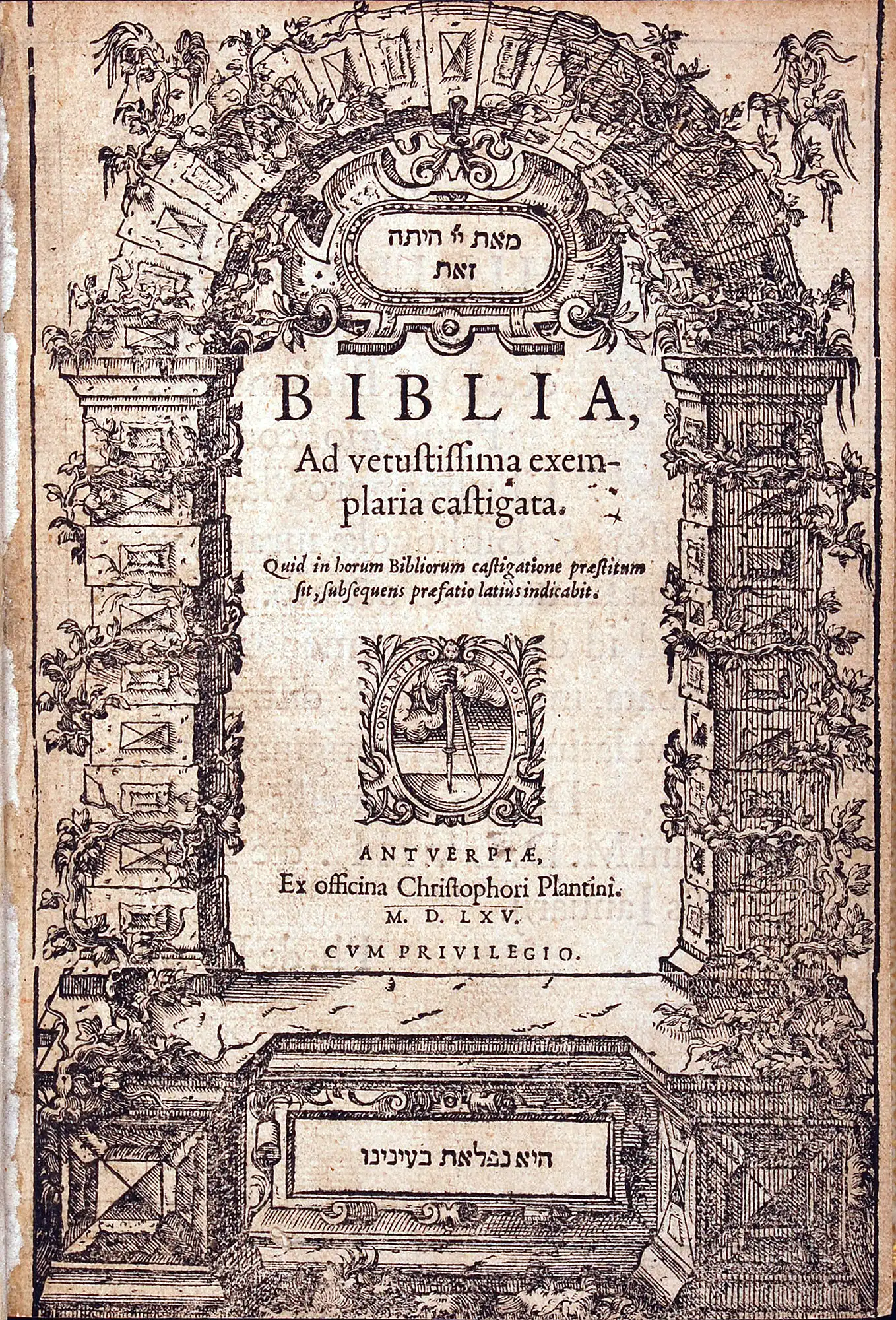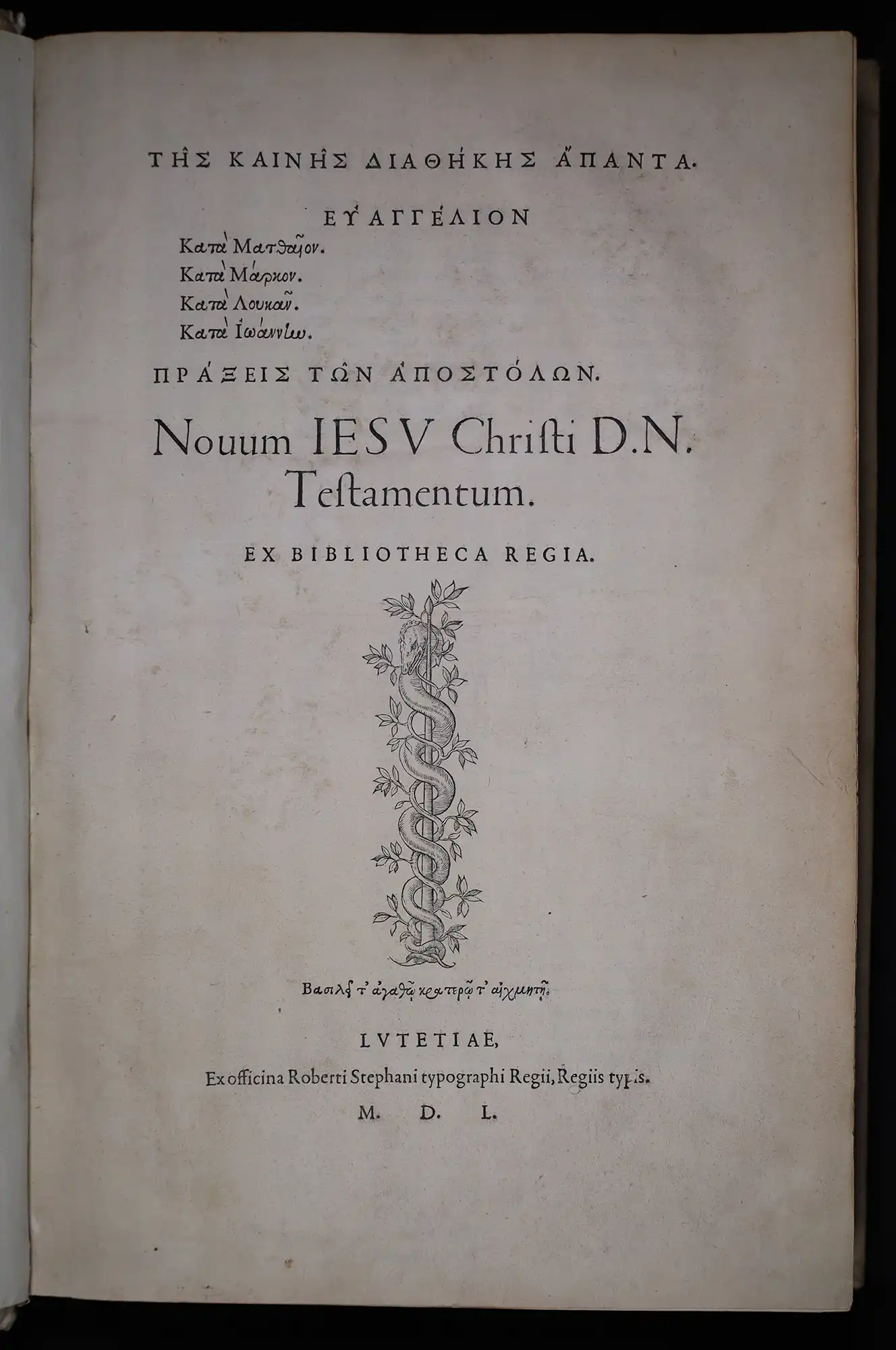Case 14
- Greek and Latin Bibles

Biblia: ad vetustissima exemplaria castigata: quid in horum bibliorum castigatione praestitum sit, subsequens praefatio latius indicabit. Antwerp: Christophe Plantin, 1565.
It is around the mid-sixteenth century that the Netherlands emerges as a force in European printing. The golden age of Netherlandish book production was initiated by the name of Plantin which became a dominant firm into the seventeenth century, especially in the southern Roman Catholic part of the country.
Christophe Plantin (ca. 1520-89) was a Frenchman who learnt to print in Paris but settled in Antwerp from 1549. He soon became the foremost publisher of the northern European trade, and employed 22 presses by 1576, thus equalling Koberger’s establishment three generations earlier.
In his own lifetime, Plantin printed nearly 2,000 books, employed quality type-cutters and placed much store in good and copious illustration. His main interest however lay in publishing rather than printing, and the diversity of his publications is imposing; it includes liturgical and religious texts, Greek and Latin authors, scientific and medical works, and modern French writers. His eight-volume Polyglot Bible of 1568-73 is considered his greatest work.
The Reed Collection includes a copy of Plantin’s 1565 Latin Bible. The text is that of the 1547 Louvain Bible, the first printed Bible issued after the Council of Trent declared the Latin Vulgate the official Bible of the Roman Catholic Church in 1546.

Biblia: ad vetustissima exemplaria castigata: quid in horum bibliorum castigatione praestitum sit, subsequens praefatio latius indicabit. Antwerp: Christophe Plantin, 1565.
Open image in new window

ΤΗΣ ΚΑΙΝΗΣ ΔΙΑΘΗΚΗΣ ΑΠΑΝΤΑ. ΕΥΑΓΓΕΛΙΟΝ … ΠΡΑΞΕΙΣ ΤΩΝ ΑΠΟΣΤΟΛΩΝ. Nouum IESV Christi D.N. Testamentum. Ex bibliotheca regia. Lvtetiae: Ex officina Roberti Stephani typographi Regii, Regiis typis, 1550.
The Estienne family of Paris were significant printers of classical literature, as well as Greek and Latin translations of the Bible. The family firm began in ca. 1502 with Henri Estienne (Henricus Stephanus), and was continued by his son Robert from 1525, and subsequently, Robert’s son Henry (1528-98).
The 1550 Greek New Testament printed by Robert Estienne (1503-1559) is considered the most important of the four editions he produced between 1546 and 1551. It is known as the Editio Regia (Royal Edition) for the beauty and elegance of its Greek font. Created by Claude Garamond (d. 1651), it became the most widely used Greek font by European printers.
The Editio Regia is also important for being the first Greek New Testament to include a critical apparatus, which Estienne added in the inner margins. The apparatus consists of variant readings from fifteen Greek manuscripts as well as readings from the Complutensian Polyglot (the first printed polyglot of the entire Bible).

ΤΗΣ ΚΑΙΝΗΣ ΔΙΑΘΗΚΗΣ ΑΠΑΝΤΑ. ΕΥΑΓΓΕΛΙΟΝ … ΠΡΑΞΕΙΣ ΤΩΝ ΑΠΟΣΤΟΛΩΝ. Nouum IESV Christi D.N. Testamentum. Ex bibliotheca regia. Lvtetiae: Ex officina Roberti Stephani typographi Regii, Regiis typis, 1550.
Open image in new window

